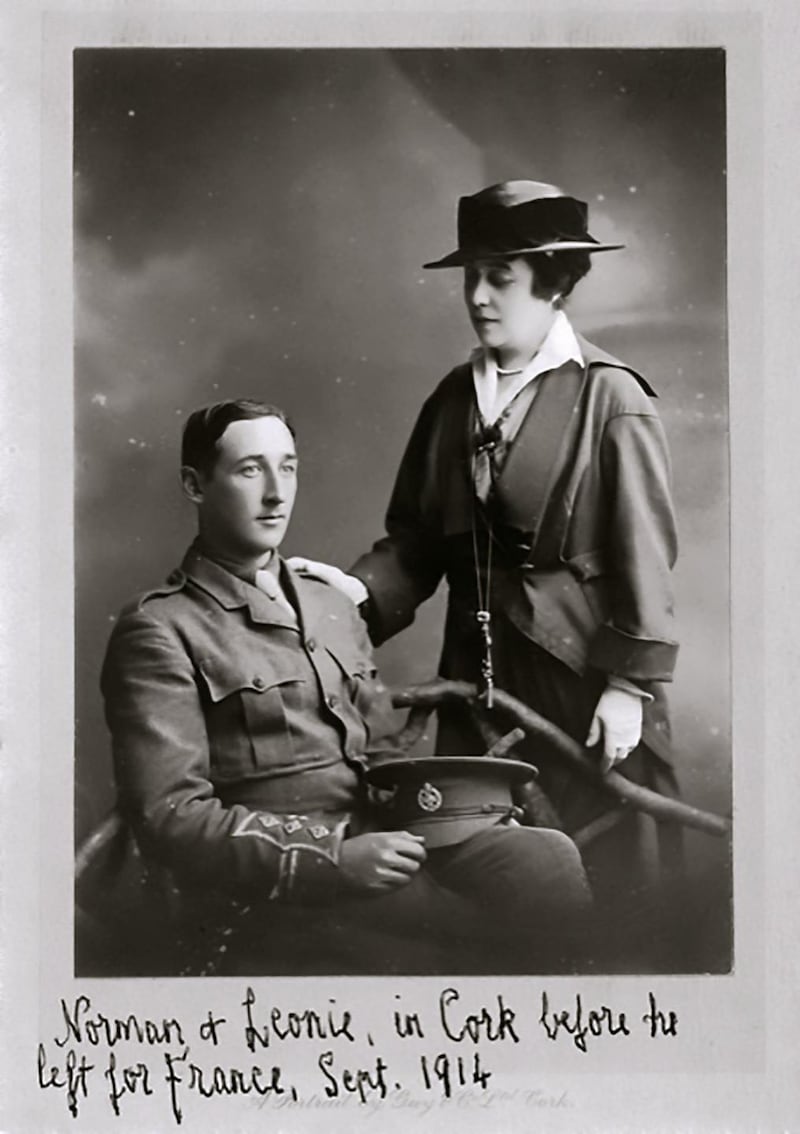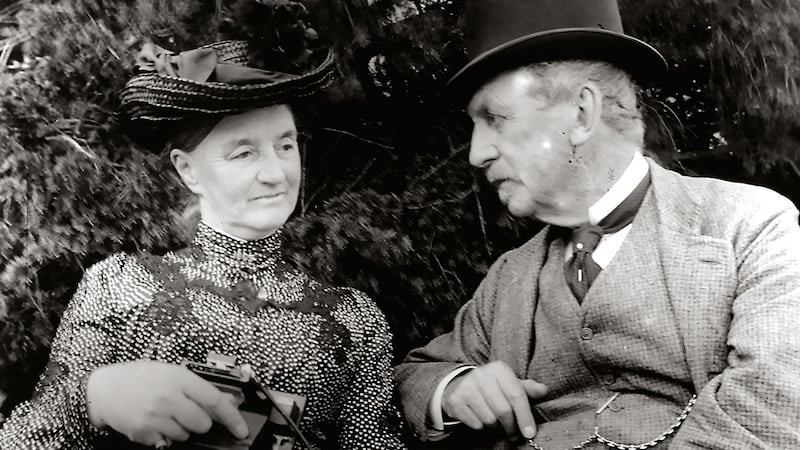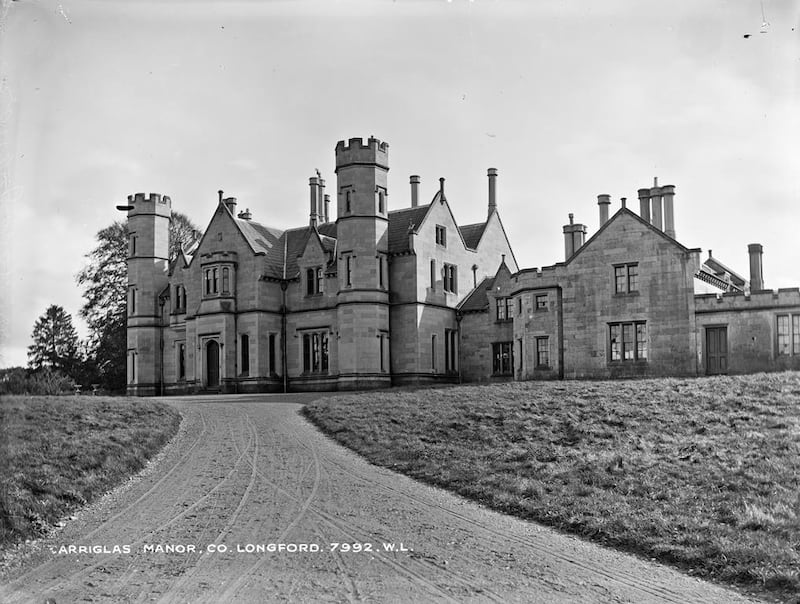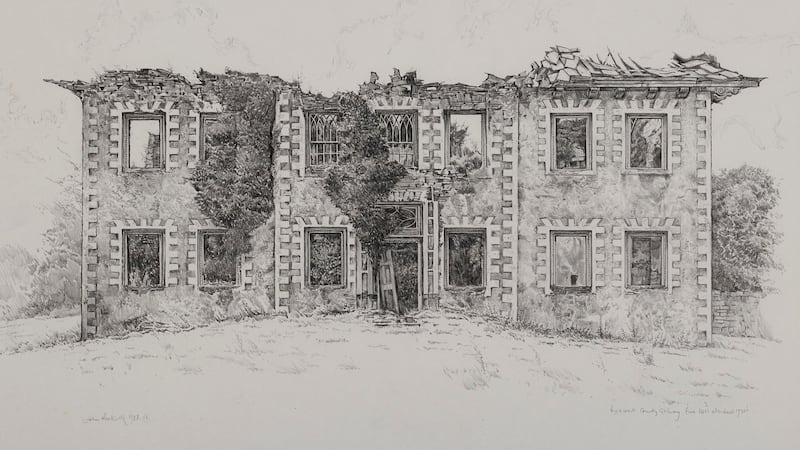Few stories encapsulate the tragedy of the first World War as starkly as that of Norman Leslie. The second son of the Leslies of Castle Leslie at Glaslough, Co Monaghan, his early life was fairly typical of a young member of the Anglo-Irish gentry. Educated at Eton and Sandhurst, he was the sort of dashing young captain who appealed to the ladies - in fact, he was the last British army officer to fight a duel. Having survived that, he shipped out to France in September 1914, aged 28. By the middle of October he was dead.
It’s just one of the many personal tales which are recreated in a new exhibition at Maynooth University Library – The Country House and the Great War. “We’re drawing on archives which haven’t been seen before,” says the exhibition’s curator, Terence Dooley of the Centre for the Study of Historic Irish Houses and Estates at Maynooth (CSHIHE).
A collaborative project between CSHIHE and Maynooth University Library, the exhibition is supported by the Maynooth University Executive as part of its Commemoration 2018 programme. It chronicles the changing attitude of the Irish aristocracy to the war, as well as the roles played by big houses and gentry families during the fighting.
“The sense that these are real people is very, very strong,” Dooley says. “Norman Leslie’s mother and father never got over his loss. They kept his room as it was before he left. This is a mother and a father, not a landlord and a landlady - and that’s what we’re trying to get across, the complexities of Irish history.”
“More members of the gentry were killed than any other class - and that’s to be expected, given the contribution they had made to the army, navy and so on in the past,” Dooley says. At the outbreak of the war, recruitment fervour was high. “But as the war went on they realised that this new type of warfare was a catastrophe. Every day there was news of friends, relatives and neighbours who had fallen.”



Some families suffered extraordinary losses. Three of the six sons of the fourth Baron de Freyne of Frenchpark, Co Roscommon, were killed in action; another died as a prisoner of war. Some 18 members of the Lefroy family of Carriglass, Co Longford, served at the front. In Galway, Lady Clonbrock collected money for parcels and medical supplies to be sent to the front, while the De Robeck sisters of Gowran Grange in Kildare drove ambulances.
Ireland's changing attitude to the Anglo-Irish aristocracy is a topic with which Dooley is very familiar. His 2001 book, The Decline of the Big House in Ireland, went to the top of the bestseller list at a time when Irish people were just starting to get over the hostility which had allowed so many of our country houses to fall into decay. Now his students are conducting their own research into this aspect of Irish history. "I don't think we'll ever go back to the negative attitudes that we had in the past," he says. "The younger generation just don't carry that historical baggage."
Vain Transitory Splendours
An exhibition at the City Assembly House on Dublin’s South William Street, is a reminder of how far we have come. Vain Transitory Splendours, organised by the Irish Georgian Society and curated by the art historian William Laffan, shows some of our most important - and most neglected - houses as they were in the 1970s and 1980s.
The English architectural artist John Nankivell spent many long summers exploring Ireland. He had a particular fascination with decaying country houses. His detailed drawings are works of art in their own right, but also form a record of grand country houses which have now disappeared, such as Tudenham, Co Westmeath and Eyrecourt, Co Galway. A few more fortunate buildings, such as Ledwithstown House in Co Westmeath, were later saved.

The English poet John Betjeman was a great admirer of Nankivell’s art. Betjeman’s biographer, Bevis Hillier, explained its magical quality: “Though the buildings were depicted with careful detail, there was something about the perspective — a hardly perceptible distortion — that saved the drawings from being drily academic; it was as if the buildings were reflected in a lake with a slight shiver across its surface.”
The Country House and the Great War opens at Maynooth University library on Thursday, October 4th, at 7.15 pm, with a talk at 6pm by Dr Ian d'Alton, The Unreasoning Adventure: How the Great War Took the Irish Gentry Prisoner
Vain Transitory Splendours is at the City Assembly Rooms, 58 South William Street, Dublin 2, until October 28th. Open Tuesday to Saturday, 10am to 5pm, and Sunday, noon to 5pm. Admission is free. igs.ie














